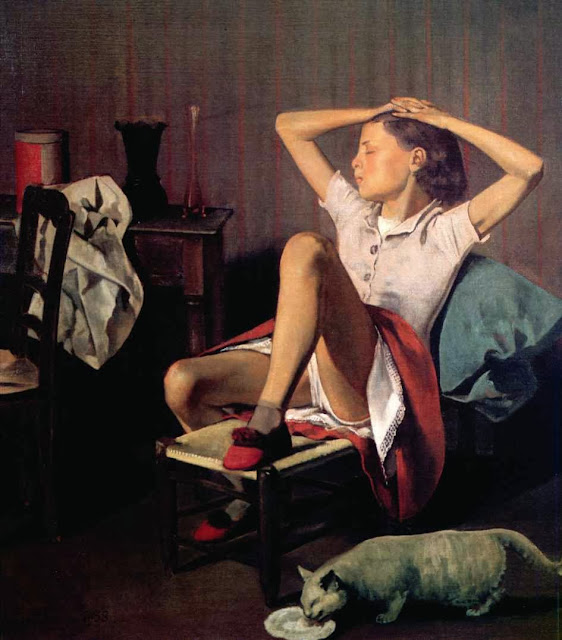 |
| fig 1. Holkham Bible, MS 47682, fol 2, British Library, England, 1327-1340, (detail). |
The crowning of Satan, from one of my favorite manuscripts
the Holkham picture Bible (1327-1340) a book created by an amateur (Figure 1,
2). The proposed, by Michelle Brown, amateurism of the creator certainly
explains the very unorthodox image of the creation of the world. Usually God
would be shown creating the world while the angels are worshiping him, or if
they are the rebel angels then they would be falling in to the fiery pit of
hell (Figure 3), but here we have Satan enthroned.
 |
| fig 2. Holkham Bible, MS 47682, fol 2, British Library, England, 1327-1340. |
 |
| Fig 3. Queen Mary Psalter, Royal MS 2 B. vii, fol. 1v, British Library, England, 1310-1320. |
I must admit that this is the first crowning of Satan that I
have seen, thought there are quite a few depictions of crowning or worshiping of Antichrist but that is usually shown in the context of Revelation, moreover
Satan and Antichrist are different characters. This image is truly unique in
its depiction of the crowning of the Devil before the fall, and positioning the
scene above God’s head.
Even more interesting is where the idea came from. Medieval
theologians usually explained the motivation behind Satan’s fall being envy, that
is Satan wanting to be like God. But this definitely does not show envy, this
shows Satan trying to replace God as ruler. The only famous and widely disseminated
narrative where Satan wanted God’s throne was the Anglo Saxon poem Genesis
A&B, which can be found in the Caedmon manuscript (Figure 4). In it the devil
is described as being second to God (very different from Augustine who
suggested that the devil was one of the lesser category angels) and boasting that
he will establish a throne in the Northern part of heaven (interestingly the Northern
part of the church is sometimes called the devils side, and the door on the Northern
wall is known as the ‘Devil’s door’). In the meantime, God finds out about the boasting
but instead of expelling the angel he first creates hell as the rebels' personal
prison and then he throws them there. The twist of this story is that it is
happening before the creation of the world and reality. This small detail might be relevant to this depiction as the crowning of Satan and hell mouth are located
outside the circle of creation in which we see God creating earth while the moon
and the sun rotate around him.
 |
| Fig 4. Caedmon Manuscript, MS Junius 11, fol 3, Bodleian Library, England, c. 1000. |
An alternative explanation for crowning Satan is political -
1327-1340 was a very chaotic time for Britain. In 1327 Isabella of France Queen
consort of England and her lover Mortimer overthrew Edward II and his ‘ favorite’
and claimed the thrown for Edward III. Because Edward III was underage at the time it was his mother and her lover who reigned. Edward II was imprisoned, his
‘ favorite’ was executed (he was very unpopular with most of the English
Barons), 6 months later Edward II, himself, was assassinated. Popular legend
has it that he was killed by having a red-hot poker thrust into his anus, although there is no contemporary
evidence to this. The myth probably arose as a comment on the king’s
homosexual tendencies. Isabella and Mortimer then ruled until 1330 when Edward
III took over the thrown and executed Mortimer, as for his mother he gave her a
generous pension and sent her away from the public eye. In this way the crowned
Satan can be a reference to a wrongful ruler, and the pit underneath him is the
foreshadowing of his fall.
.JPG)






.JPG)








